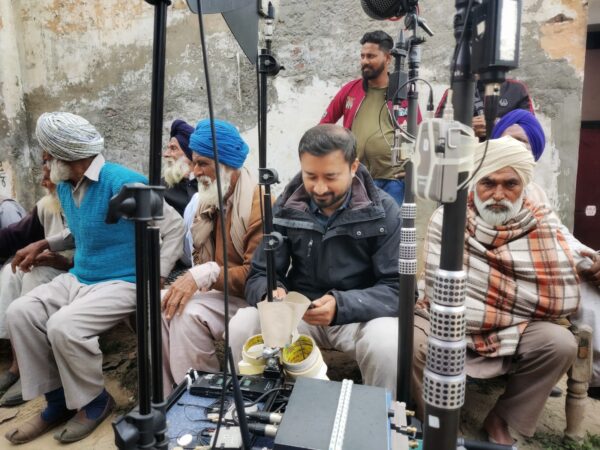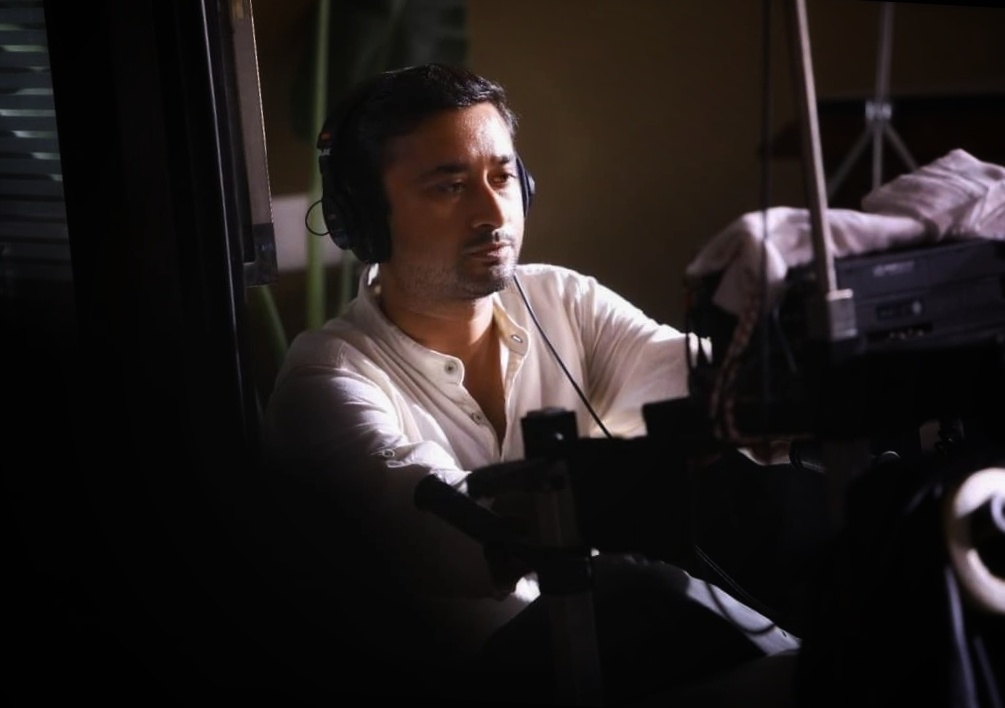When I received a call from Window Seat Films for a film with Imtiaz Ali (my second with him following Love Aaj Kal (2020)) and heard the narration of Amar Singh Chamkila, his intended biopic on singer Chamkila, known as the Elvis of Punjab, I was blown away. Firstly, this was a musical tale of a singer who made a name for himself primarily for his bawdy songs and who was shockingly gunned down along with his wife and co-singer, Amarjot, when he was just 27, a murder that remains unsolved. Secondly, it was a period drama set mostly in a rather tumultuous part of Punjab’s history, the 1970s and especially the 1980s when the movement for a separate state of Khalistan was in full swing. What could be most exciting and challenging for a sound designer?
Immediately, I got to work and began my background research on the era. I have to confess, I was not very aware of the political history of the 1980s in Punjab. So, I started reading books, watching films, and discussing Punjab and its history with my Punjabi friends to get to know the region in a better way. Before starting work on the film, I also sat several times with Ali to learn more about his perspective and how he wanted to hear the sounds of Punjab in the film. What really helped me when he spoke about the history of the Akhadas – live performances in front of audiences – in Punjab.
During my research, I found that Chamkila and his wife, Amarjot, used to sing mainly with a higher pitch, especially Amarjot, and the loudness factor was pretty high. Due to Chamkila’s immense popularity, the Akhadas were always overcrowded with heavy interaction from the crowd. Chamkila with
I also did live recordings for the montage shots where Chamkila sang alone to prepare himself as a singer and practice his vocal skills in different locations – from the top of the well or in a crowded market, for instance. In the well shot, I placed a boom deep down inside the well to capture the natural reverb and the original vocal. In the crowded market scene, where Chamkila was singing, I asked the crowd not to make any vocal sound, which would be considered an unwanted noise and requested that they ‘mimic’ it in the shot. In addition, there were scooters, cyclists, and vendors passing to keep the scene visually dynamic. In all this, my aim was to capture only Chamkila’s solo vocals to illustrate that when Chamkila practiced his vocal skills, he was unaffected by all the external noises around him. In the places where Chamkila practices with different singers, including Amarjot, the primary challenge was to control the level of the harmonium and the intensity of the room reverberation in the same take.
I want to mention a couple of scenes from the film that were particularly difficult for me with various sounds overriding each other. In the panchayat scene, the head of the village tries to punish Chamkila in front of the village crowd. The scene was written in a way where the crowd also reacts with dialogues over Chamkila’s speech. Or when a group of eunuchs comes to the house just after Chamkila’s marriage, they are singing and dancing along with the dialogue. The best support for me was Ali himself. He used to cue the actors perfectly so that the scene could be captured live. Not just these two, there were, in fact, lots of scenes where individual or even multiple reactions from the crowd happened while the main characters were performing. Sometimes, it was also candid. In spite of all the technical challenges, I’d like to think we managed to execute what we set out to do in terms of the tonal quality of the film.
As the film is set in the 1970s and ’80s, another difficulty was the contemporary sounds from the surroundings. With the help of production and the sound lock-up security, we stopped vehicles and turned off mobile phones of the crowds etc., to avoid any modern sound noises from making their way into the tracks. Sometimes, there were songs being played from a speaker during village functions. These were turned off precisely during the take to get a clear vocal recording.
An important aspect of the sound design was depicting Chamkila’s life as he went from dire poverty into becoming a popular figure. So when Chamkila was growing up in a slum, I created a soundscape with a very real, raw, loud and chaotic ambience to establish the slum he lived in. Gradually, as his social status changed, the soundscape changed accordingly. Now, all the lanes were specifically defined – like the lane containing all the singers’ offices. We hear the sounds of instruments like the dholak and harmonium coming from different directions, which gives a feel of the presence of the musical community. Also, the lane was close to the market and bus stand, which we do not always see. But through the sound design, we sense the market around us.
The period covered in the film was one of high political turbulence. The Declaration of Emergency, the Khalistan movement, Operation Blue Star, the murder of the Indian Prime Minister, Indira Gandhi, by her own Sikh bodyguards, the anti Sikh pogrom that followed – so much happening that affected the overall socio-political life of the country and Punjab in particular. I played with silences to bring out the turmoil of the period. Towards the film’s beginning when we hear the news broadcast about Chamkila’s death on various radio stations, each and every radio announcement was done by looking at the make of the radio with the relevant distortion added accordingly in the audio post.
Mixing the recorded Akhada songs was another challenge since all of the tracks were recorded on set. My primary aim was to make sure it sounded like a live stage performance of the time. I worked on separate vocal processings to give a feel of the voice coming from horn speakers, which we also see visually. The crowd, as I’ve mentioned above, was one of the major factors in this film and much time was spent on sound editing their bits. While a significant part of the crowd’s ambience was recorded on set along with the scene, later on, the ADR (part of the sound design process where the artists record their vocals according to the scene inside a studio) polished it further with ups and downs of cheering, hooting, whistling, clapping, etc. All of it was done with the sole intention of portraying Chamkila as larger than life.
I think I did fine because at the end of it all, Imtiaz Ali congratulated me saying that the sound design was the hero of the film.



